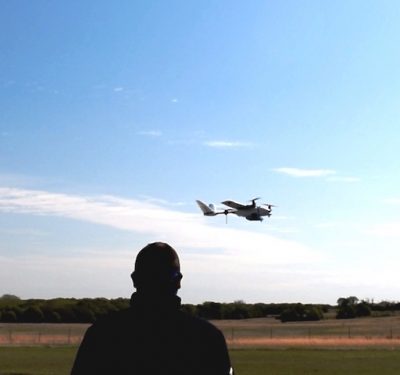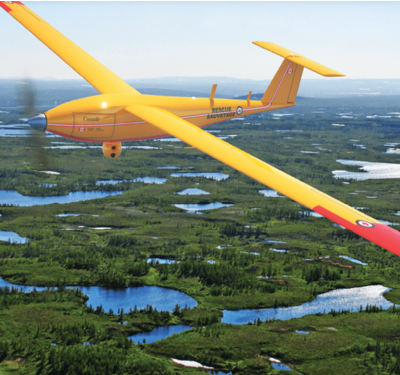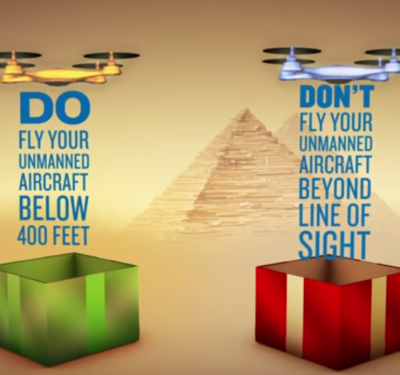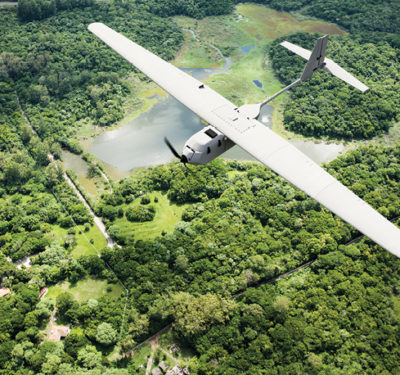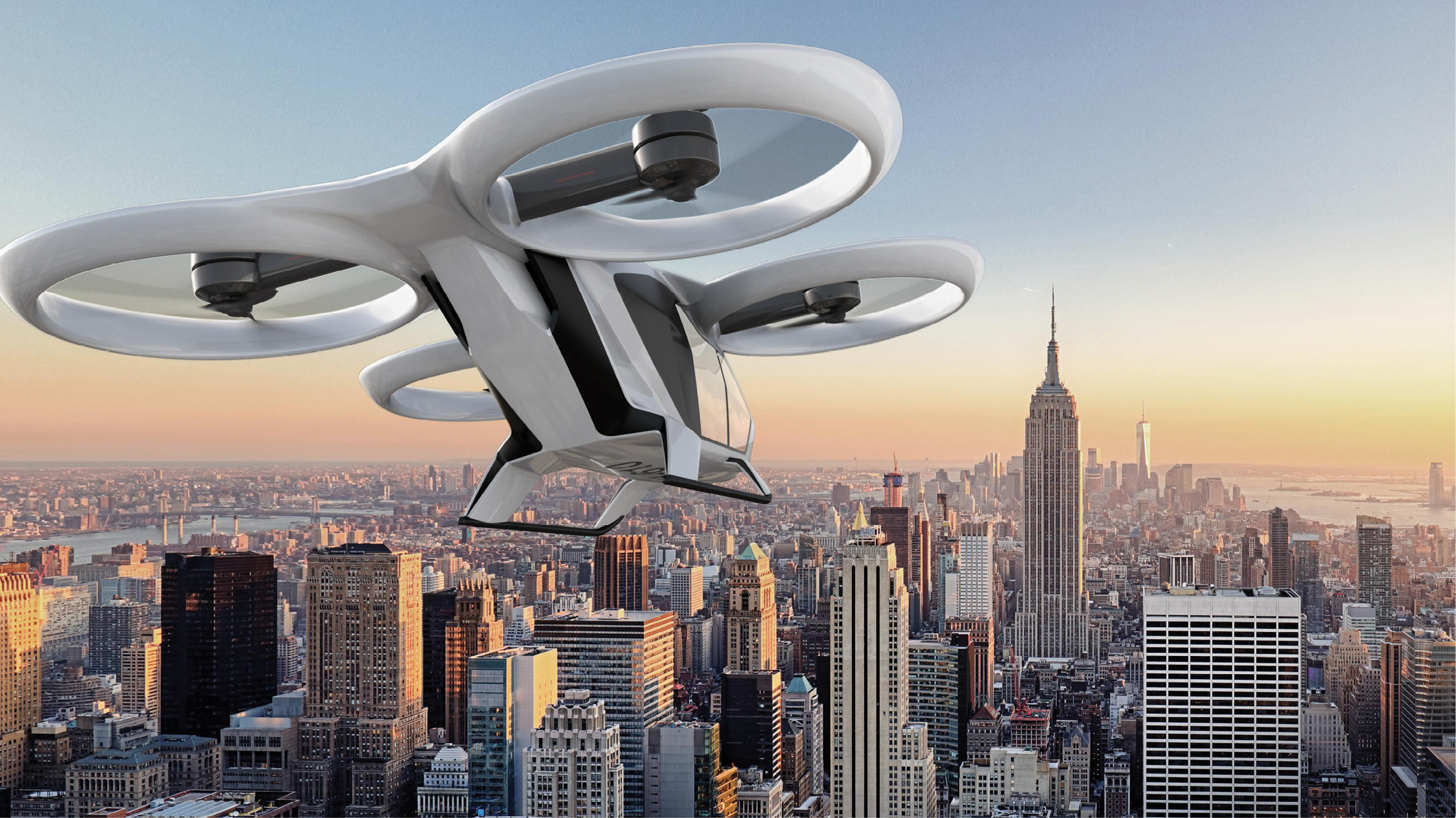
CityAirbus, a multi-passenger, self-piloted eVTOL that Airbus is developing. Photo courtesy Airbus
As road travel in large cities becomes increasingly congested, many believe there has to be a better way for the public to safely travel to work and other destinations—and that better way is a concept known as Urban Air Mobility, or UAM.
Until recently, UAM seemed like a futuristic idea that wasn’t likely to take shape any time soon. But over the last year or so, major players have started developing air taxis as well as the infrastructure necessary for these vehicles to safely transport passengers and cargo. NASA, Airbus, Uber, Boeing’s Aurora Flight Sciences, Bell Helicopter and Volocopter are among the many heavy hitters making progress in the UAM space.
“UAM will reduce congestion, reduce transportation delays and enable on-demand travel to deliver cargo and quickly move people through the air,” said Parimal Kopardekar, senior technologist for air transportation systems at NASA’s Ames Research Center in Silicon Valley. “It started with using drones to carry small cargo packages, perform search and rescue missions or for traffic monitoring, but with the excitement and interest in electric vertical take-off and landing (eVTOL) aircraft, we’re now looking at moving people and larger cargo through the air.”
For the last few years, NASA and others have been working to develop an unmanned air traffic management (UTM) system to safely integrate unmanned aircraft system (UAS) into the National Airspace and enable beyond visual line of sight (BVLOS) flights. They’re now looking to expand that same construct to UAM, giving these vehicles the ability to exchange information about their location and to avoid each other while they’re in the sky, Kopardekar said.
Having that system in place is a vital piece of UAM, but is just part of what needs to be accomplished before air taxis can routinely fly passengers to their destinations. Regulations, battery life and creating the right infrastructure are all important considerations, as is developing autonomous aircraft that can safely, and quietly, carry people and packages to where they need to go.
While there are still plenty of challenges to overcome, those leading development in this space are confident it’s only a matter of time before air taxis become a reliable, and common, form of public transportation.
“The future is now. It’s happening,” said Mathias Thomsen, general manager for UAM at Airbus. “The activity level over the past year has gone from niche and below the radar to now being very public, with many serious projects underway. I find that encouraging.”
The Vehicles
Manufacturers are working to develop a variety of vehicle types, with most focused on eVTOL systems that transition to wing-borne flight, Kopardekar said. The vehicles may use battery and distributed electric propulsion, and/or hybrid (battery + fuel) systems. Some will only have rotors, while others will feature a combination of fixed wing and rotors for take-off and landing.
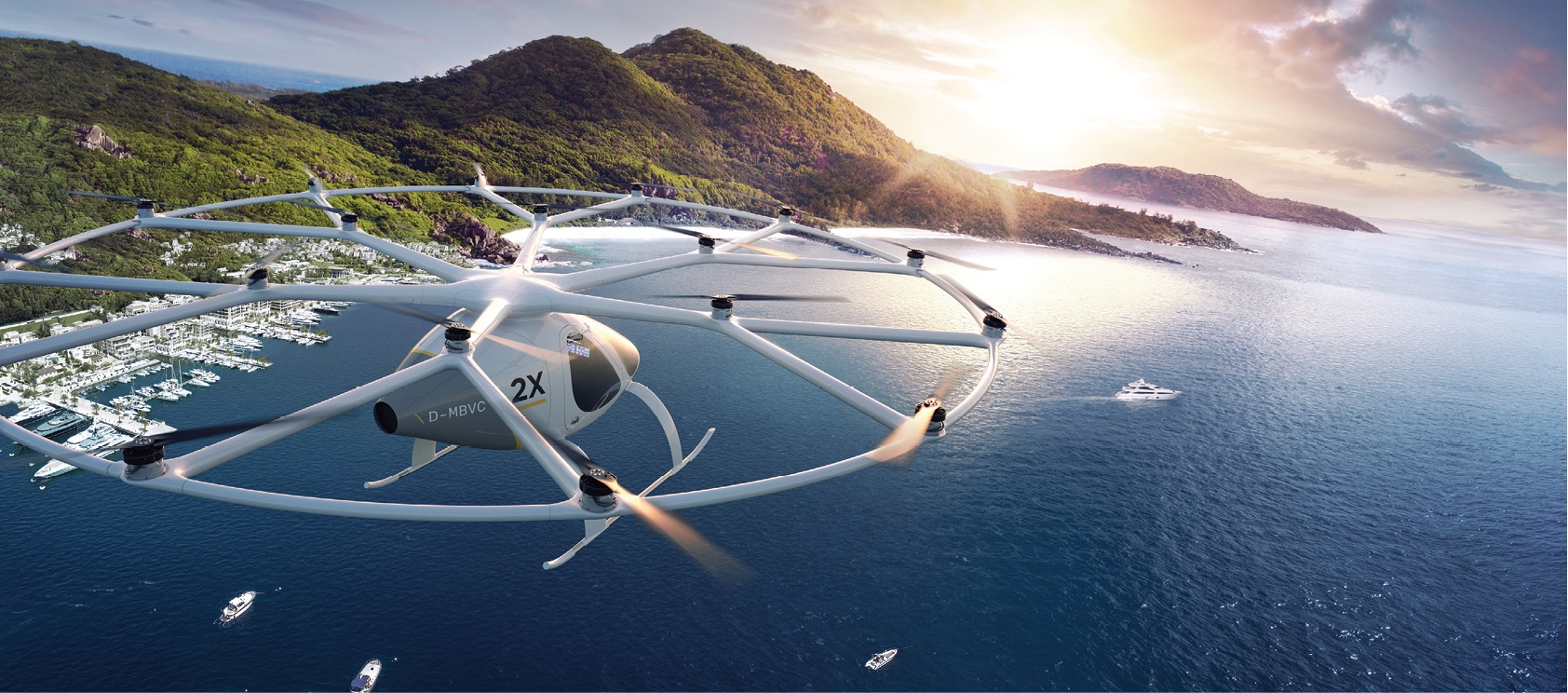
Volocopter’s system features 18 rotors powered by 9 batteries. Photo courtesy Volocopter
No matter the type of vehicle, a lot of research is being done by NASA and other players to ensure they’re safe, energy efficient and easy to integrate into large urban areas, Kopardekar said. Of course there are many questions that need to be answered, such as how can developers create a vehicle with an acceptable noise footprint, how can aircraft safety be assured under all contingencies, how can these vehicles be scaled to high density airspace operations in the presence of other aircraft without overburdening the air traffic management system, and how can these new systems be certified.
Volocopter is among the companies developing systems, and has an aircraft that features 18 rotors powered by nine batteries, said Helena Treeck, who is in charge of public relations for the German-based manufacturer. Each battery powers two adjacent rotors that turn in opposite directions. How quickly each rotor turns determines navigation; if the rotor in the front moves faster, the aircraft flies forward, for example.
“You can lose a few of the rotors and still be fine. Safety is based on redundancy in the design,” she said. “It’s very easy to fly a Volocopter. It’s like flying a drone. The reason for this is most of the challenges of flying are taken care of by the software. There are a lot of microprocessors and sensors inside the Volocopter that monitor the winds and whether there is any turbulence. If there is, the sensors send a signal that the rotor speed needs adjusted. The flight itself is very stable.”
This type of environmental monitoring is only possible because the aircraft is electrically driven, Treeck said. Combustion engines, for example, are not able to adjust rotor speed quickly enough. On the Volocopter, it can be adjusted almost in real time, which is made possible through Intel technology.
The small rotors help keep noise levels down (the Volocopter is quieter than a helicopter, which has fewer but larger rotors and single points of failure) and because it is battery powered, the aircraft doesn’t have any emissions—both key features for public acceptance of these air taxis.
The Volocopter team began developing the aircraft in 2011, and has completed successful autonomous test flights in Dubai. Late last year, Intel CEO Brian Krzanich became the first passenger to fly in a Volocopter. The remotely piloted flight took place in an exhibition hall in Germany.
Airbus is working on two systems, and completed a demonstration of its Vahana single passenger eVTOL in January, Thomsen said. The Alpha One, the first full-scale version of the Vahana, flew to a height of 16 feet for 53 seconds before it safely descended. The aircraft completed a second self-piloted flight the next day. The team that developed the system, A3 in Silicon Valley, was able to take the aircraft from concept to flight in less than two years. Alpha One is designed with a tilt wing, can take off vertically and uses the wing to generate lift. More flight demonstrations are planned for later this year.
Airbus is also developing a multi-rotor with four propulsion units and eight propellers. Known as CityAirbus, that system is designed to carry upwards of four passengers. Its first demonstration is expected to take place later this year.
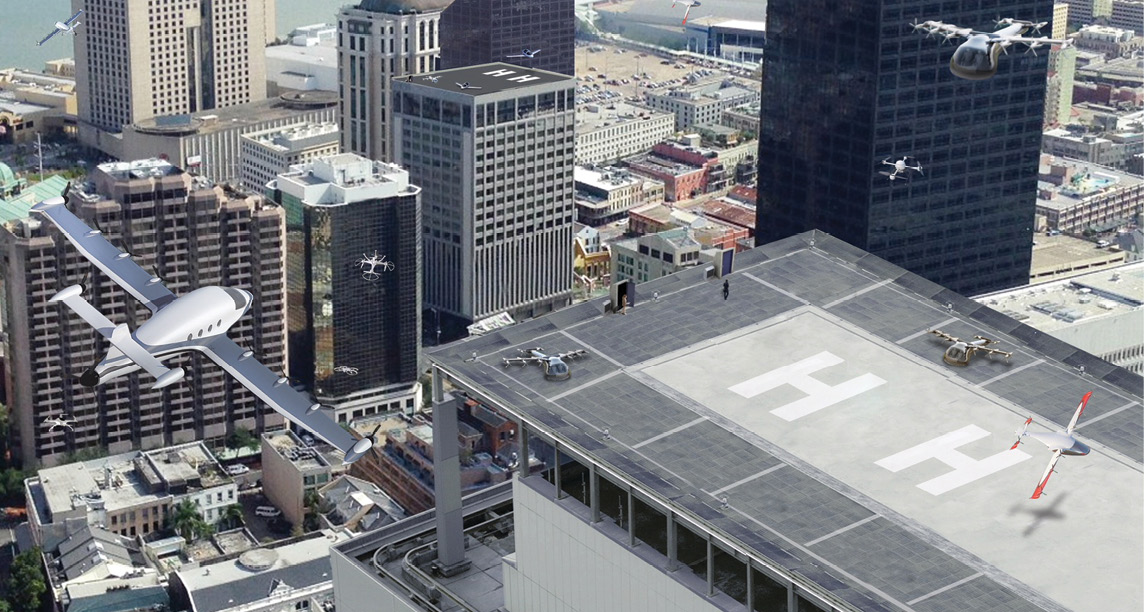
NASA and others are working to develop UAM. Photo courtesy NASA
Rather than focusing on a completely electric solution, Bell Helicopter is developing a hybrid system, Director of Innovation Scott Drennan said. The company will move toward a completely electric battery once energy densities become more viable. With the hybrid propulsion system, the aircraft will be able to carry four or five passengers and travel longer distances than if it were fully electrically powered, though Drennan isn’t saying exactly how far yet.
The company also isn’t revealing the system’s configuration, Drennan said, because for now they want to focus on introducing customers to this new experience. Bell is exhibiting at large technology shows, such as CES and SXSW, where they’re providing consumers with a virtual reality experience of what rides will be like in the Bell systems.
Bell is one of five air taxi developers working with Uber Elevate, which was launched to help develop an ecosystem for UAM, said Tom Prevot, director of airspace systems for Uber Elevate. Aurora Flight Sciences, Pipistrel Aircraft, Embraer and Mooney are the others. At first, three to four passengers will have the ability to travel 25 to 60 miles, which is where he sees the limits will be based on battery capacity.
Even though the vehicles will fly autonomously, those deployed as part of Uber Elevate will have pilots at first to handle any unforeseen situations that may arise during a trip.
“We’ll be able to generate the data we need to make the case to eventually take the pilots out. It’s the same concept as with self-driving cars. You have a safety driver,” Prevot said. “Certain routes will be less complex, and in those instances we’ll be able to make the safety case for flying the aircraft without a pilot sooner.”
Taking the pilot out makes it possible to add another passenger, Prevot said, which helps keep prices down—which is vital to making UAM successful.
“A lot of people see Volocopters and think they’re a new toy for the rich,” Treeck said. “We want this to become part of the public transportation system, so it must be affordable. It’s not like a private jet, but more like the cost of a cab.”
The Infrastructure
A UTM system is critical to making flying air taxis possible, Kopardekar said, and must be a solution that doesn’t burden the current air traffic management systems while handling large-scale, high-density operations. That’s one of the pieces NASA is working on and is Kopardekar’s area of focus.
To alleviate the burden, Uber Elevate plans to develop a corridor where they manage their own fleets that are separated from other aircraft, Prevot said.
Volocopter intends to do the same, and will establish a route in the next two to three years. That first route won’t be a full system but a point-to-point connection that allows people to experience the aircraft, Treeck said. They also expect to receive a special license for a corridor that’s reserved for Volocopter.
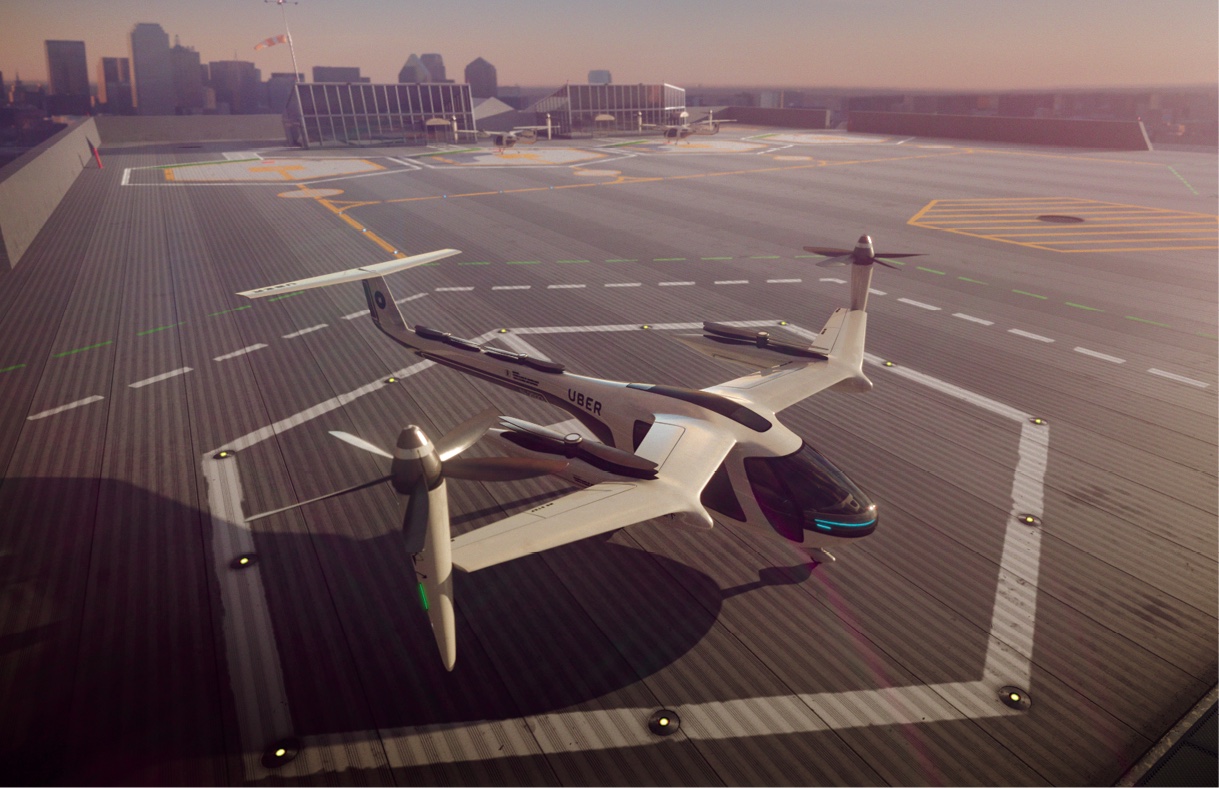
Photo courtesy of Uber Elevate
“The vehicles will have to integrate into uncontrolled airspace occupied by drones and other aircraft, but we’ll also have flights to airports so they’ll have to integrate into controlled airspace operations as well,” Prevot said. “Combining those two in a smooth way is a specific challenge that’s going to have to be addressed. We need to scale without burdening air traffic control.”
These aircraft won’t be taking off and landing on city streets or in parking lots, Thomsen said; they’ll fly from vertiport to vertiport where passengers will either walk, take a ground vehicle, or catch the subway to reach their final destination. That means for air taxis to become part of the transportation system, vertiports will need to be created.
Vertiports may be placed on existing buildings or even integrated into our highways, Drennan said. In some cases, sky ports will be part of the designs of new buildings. The UAM infrastructure will likely be a combination of both old and new, with the network starting out small and growing over time.
For this all to work smoothly, a mechanism needs to be developed so passengers can easily schedule a flight as well as the vehicle that will take them to and from the vertiport, Prevot said. That can easily be accomplished through the existing Uber app.
The network will also provide information to aircraft pilots, Prevot said, such as the schedule, flight planning, re-routing information, airspace management services, and any environmental aspects, such as weather, that might affect a trip.
Transporting Cargo
While passenger vehicles seem to be the focus, there’s also an opportunity for these large aircraft to deliver cargo. Delivery vehicles will need the same emergency landing options as passenger-carrying air taxis, Kopardekar said, and safety for the systems as well as assets on the ground will also need to be considered as they’re built out.
Airbus is working to develop a cargo delivery drone called Skyways, Thomsen said. The Skyways UAS recently completed a delivery at the National University of Singapore, where it took off from its dedicated maintenance center and landed on the roof of a specially designed parcel station. While at the station, a robotic arm loaded a parcel, then the drone returned to the center and automatically unloaded the package.
“Many cities have congestion that’s driven by vans delivering online orders and goods. If we can relieve some of that congestion by transporting these items in the air, that’s very valuable,” Thomsen said, noting Skyways is a smaller drone focused on lightweight parcel delivery. “There’s also a use case for the larger passenger aircraft we’re designing. It will be able to transport both cargo and people, though the requirements might be different. Vertical flights in cities must be a pleasant experience for passengers, so we need to focus on seating arrangements and windows. For cargo, you need to make the vehicle easy to load and unload and to optimize the payload, but fundamentally the two are not different.”
Bell has used helicopters for logistics for years, Drennan said, and is also looking into this area with its autonomous aircraft. In fact, the passenger air taxi the company is developing can be used to transport cargo; it’s just a matter of taking out the passenger seat. They’re also working on a second vehicle type that’s dedicated to logistics.
Depending on the model, APT, which stands for autonomous pod transport, will be able to carry 15 to 1,000 pounds of cargo for same day delivery. APT has already completed successful test flights, Drennan said.
One of the challenges that comes with cargo delivery is interfacing with various logistics customers, Drennan said. Different warehouses and retail centers will likely have different systems for picking up and dropping off packages, so the vehicles will need to be able to work within those systems.
The entire process will be automated, Drennan said, including the inventory system.
“An automated inventory system will load the vehicle as it’s sitting on the vertiport. The vehicle will take off with the package and land at the distribution center, where a similar autonomous inventory system will unload the aircraft and then put another package on, or unload the power system and put a new power system on the vehicle,” Drennan said. “It could be a manual process, but we can enhance efficiencies if the flight portion and the package exchange are both automated.”
It’s more difficult for these types of aircraft to deliver packages to specific houses, but Drennan sees kiosks as a solution to that. The aircraft could drop off items at the neighborhood kiosks for later pick up, rather than right outside someone’s doorstep.
The Challenges
While air taxis offer a host of benefits—from shortening travel times to reducing emissions to enabling faster, more efficient cargo deliveries—there are still hurdles to get past before UAM can become a reality. Developing a UTM system that enables these vehicles to communicate with each other as well as other aircraft is probably the biggest challenge, but there are others the community is addressing. For example, these systems need to be able to reliably operate no matter the weather conditions and be able to execute contingency plans in case there’s an unexpected incident, Kopardekar said.
“What happens if a bird strikes the aircraft? How does it safely navigate or make a decision to land if there’s no pilot on board? The aircraft needs to be connected to a system,” Kopardekar said. “Making sure these operations are going to be safe and able to handle contingencies is key.”
Certification also will be a challenge, Drennan said. These are new propulsion systems and new vehicles that have never been certified before. To ensure their safe operation, they’ll need to comply with federal regulations that are yet to be crafted—which represents another hurdle.
The aircraft will have to meet very high security and safety standards, Treeck said. The FAA and other authorities are working on this now, but it will take a while before such standards are in place.
Then, of course, there’s the batteries. Today’s batteries only last for so long without needing to be recharged or swapped out, Treeck said. The Volocopter, for example, usually needs to be charged after every flight. Eventually, she’d like to see the aircraft only needing a boost or replacement after maybe five flights.
Every vertiport will have charging stations, Drennan said, and the amount of time it takes to get the aircraft back in the skies will depend on the type of vehicle, its payload and the distance it needs to travel. The goal, of course, is to recharge the vehicles as quickly as possible to keep the flight cadence high. What’s known as rapid charge is an option, but that method can be hard on batteries.
On the logistics side, the Bell system is modular enough it doesn’t have to wait to be recharged; it’s simply a matter of swapping out the batteries, Drennan said. There’s no need for fast charging or to wait for a cycle to complete before flying.
Not all the challenges are technological in nature. There’s also social acceptance. Before the public will be willing to trust these aircraft, they’ll need to know they’re safe, and that they won’t be a source of noise pollution. Many people are skeptical that flying taxis are actually feasible, so it’s important to start educating the public now.
“We have a big task to overcome in preparing citizens for a future with flying vehicles,” Thomsen said. “We’re approaching that through citizen engagement and public debate. We’re getting citizens involved before the technology is ready.”
The Future
UAM is going to create an entire new industry, Prevot said. The systems will need to be manufactured at a scale that’s similar to the car industry, while many other sectors will also benefit from this new class of aircraft. Sky ports will require a lot of power, generating business for utility companies, while the need for a new infrastructure will create opportunities for the real estate industry.
And this all could happen sooner than you might think. Uber Elevate, for example, plans to begin its initial flight demonstrations in 2020, with commercial operations slated to start in select cities in 2023. Others plan to have their systems ready for prime time in the early to mid-2020s.
Treeck expects air taxis to be a common sight in major cities in the next 10 to 15 years, with the first pilot programs to be up and running in about three. As large, well-known companies continue to invest in UAM, more people will see the many benefits it can provide, whether it’s cutting an hour and a half commute to 15 minutes or reducing emissions.
“It’s not a question of whether it’s coming, it’s a question of when it’s coming,” Treeck said. “It’s going to come first to megacities where there’s no more space to provide ground transportation or build roads or tunnels. Think of Tokyo as an example. This technology will first be accepted in areas where you can’t provide more mobility with the means you already have.”


